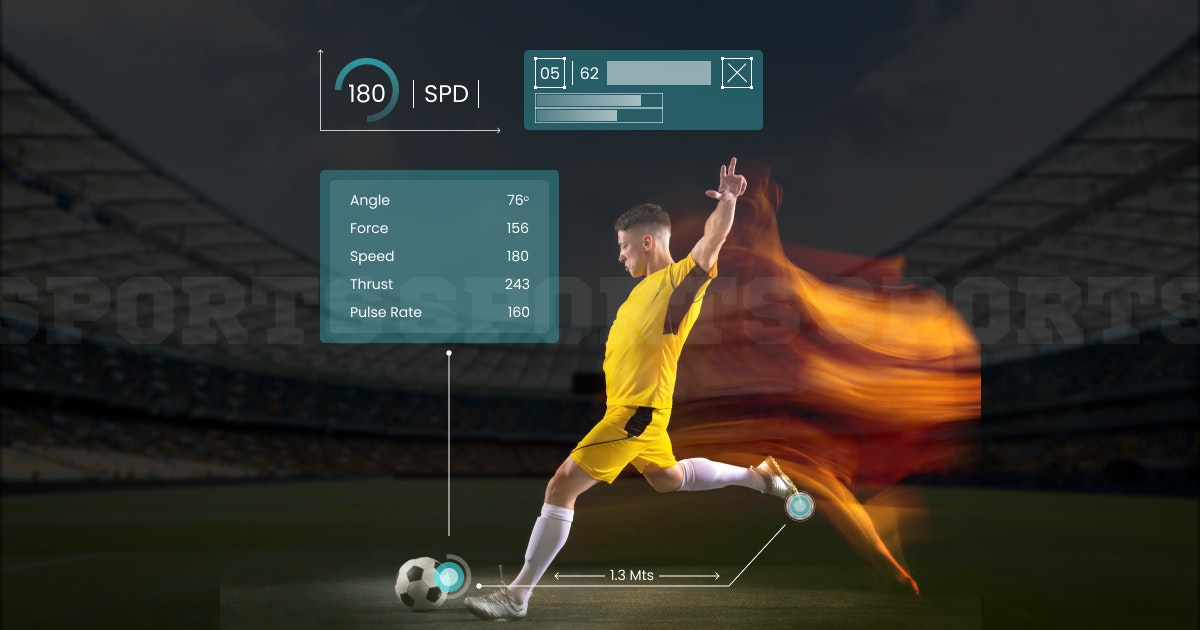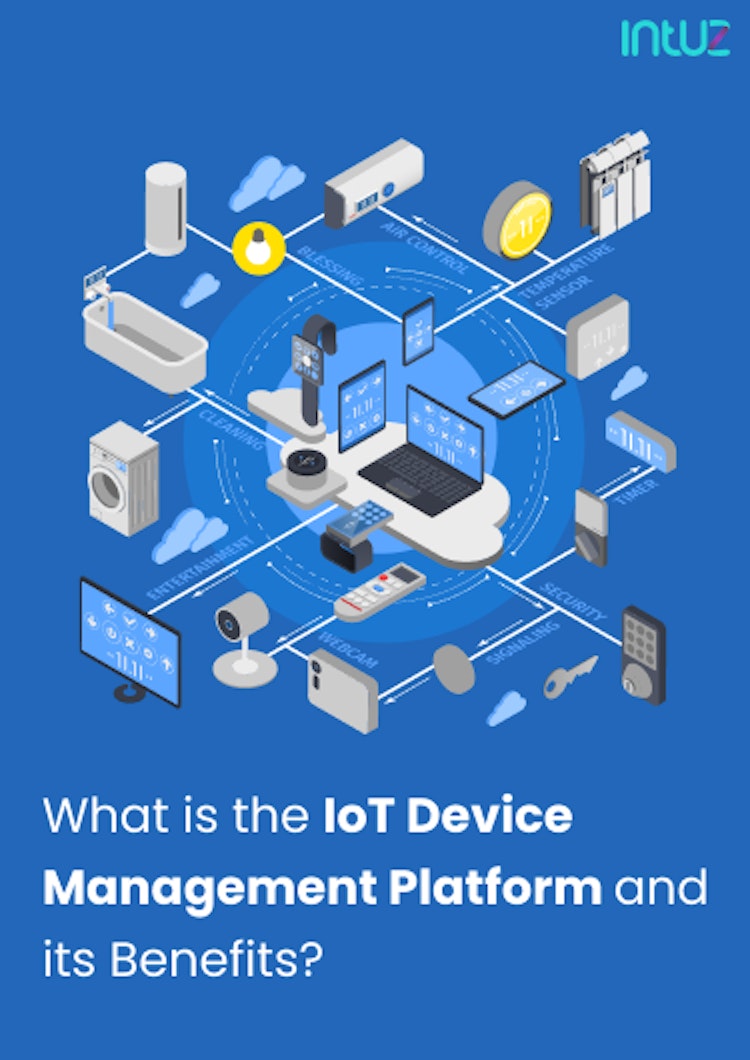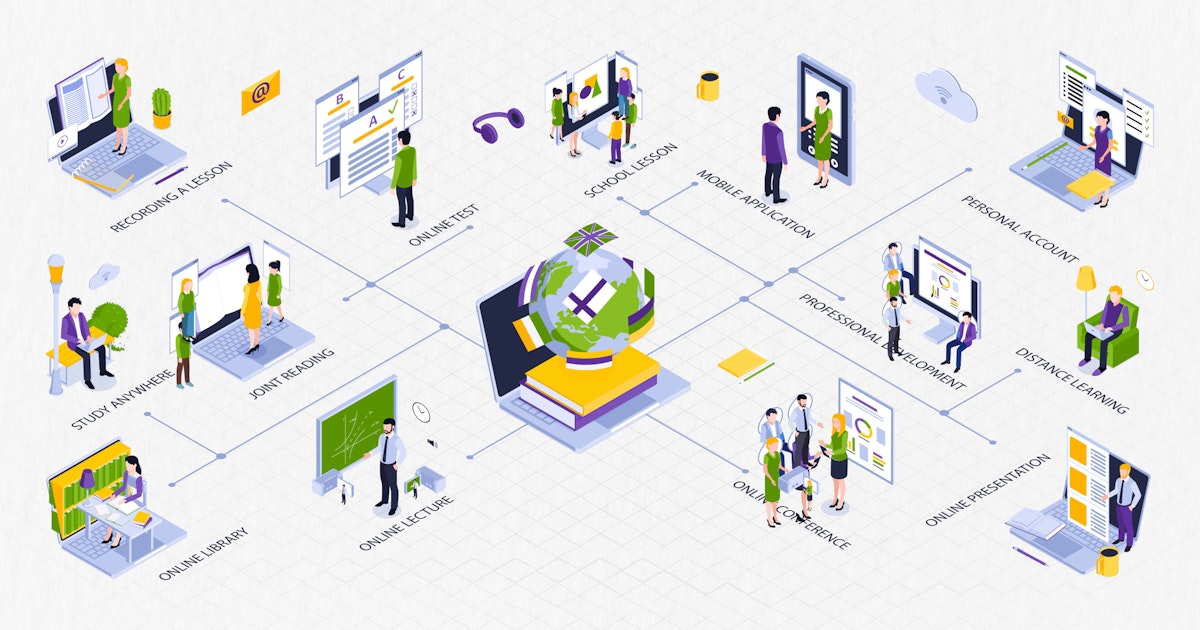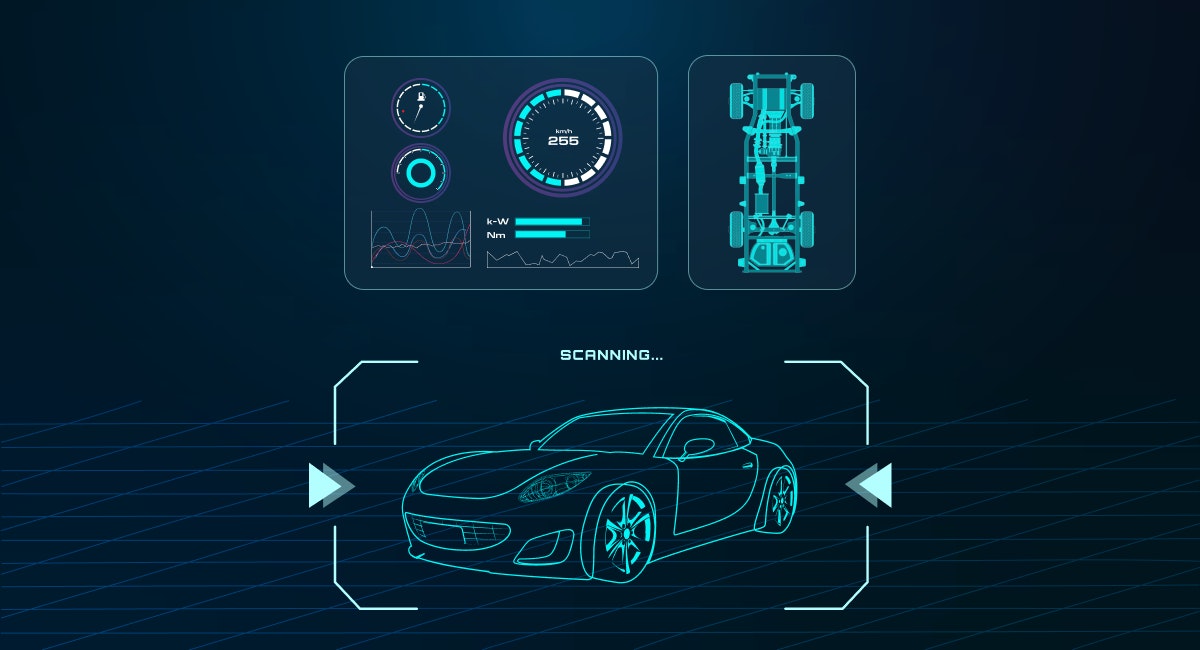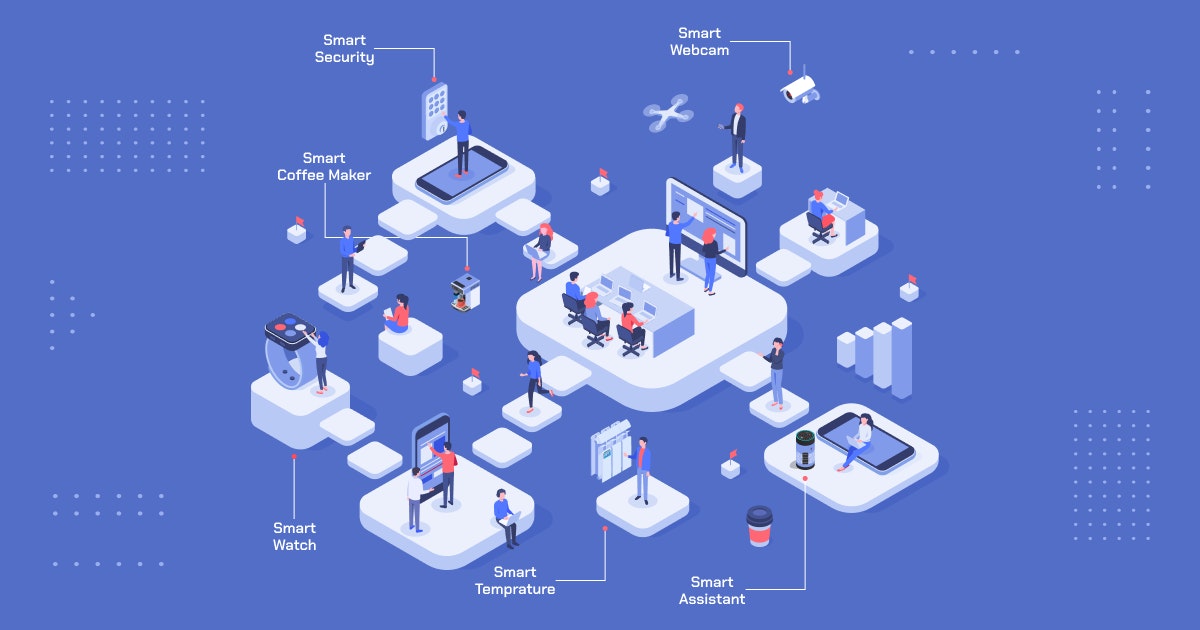Table of Content
First, we start by discussing a typical day-to-day example: Fitbits and the Apple Watch. These are widely used by athletes and fitness freaks alike. These IoT fitness trackers help users monitor vitals and critical performance metrics such as heart rate and metabolism in real-time, allowing them to be in charge of their fitness.
Not just that, today, popular sports apparel brands such as Adidas, Under Armour, and Asics have their own mobile apps: Runtastic, Endomondo, and Asics, respectively.
Because various types of connected sports are capable of measuring performance and reporting the same to their smartphones, the growth of IoT in the sports domain is not so surprising.
Do not bat an eyelid when we tell you how Microsoft came up with an IoT-powered cricket bat, having a card-size sensor accountable for collecting data such as the bat's angle, swing, and speed. Motion sensors in the cricket bat can track the swing and spin in different playing environments.
Once all the data is collected, the Machine Learning algorithm is applied to fetch high-quality results like the quality of the shot and other relevant information. To remain a competitive sports apparel brand or equipment seller, it is necessary to offer IoT-connected devices and gadgets for superior customer engagement. The time cannot be better than this.
Leveraging digitization in sports: An introduction
The increase in consumer inclination towards smart sports equipment and fitness appliances is disrupting the sports industry in ways we cannot even imagine!
Undeniably, the COVID-19 pandemic has boosted the consumer preference for health and wellness. We all want to be strong, have strong immunity, and enjoy bullet-proof metabolism after the world has gone through the past three years. Research on the smart sports equipment market 2022 shows that:
- $2.3 billion was the approximate net valuation in 2020 and $3.46 billion in 2021.
- With a CAGR of 8.2%, the market size projection of smart sports equipment in 2022 is $3.74 billion.
- Further contributing to the growth is the 12.8% CAGR in the remote health monitoring segment for 2022-2030.
- Following the above forecast, the market potential of the same can expand to $5.17 billion in 2026, growing at an 8.4% CAGR.
- E-commerce alone can witness a 7.4% CAGR rise between 2022-2030.
The use of IoT across the sports equipment industry in the present and the future will undeniably be a game-changer. This is because IoT technological capabilities can seamlessly bridge the gap between ground-level sports requirements and the digital space.
From devising connected solutions for athletes to setting daily fitness routines for day-to-day users, sports equipment and the concept of a "smart stadium" can unlock endless opportunities. More importantly, the real-time data plus connectivity would foster objective conclusions, whether for personal development or large-scale professional sports.
Let's Turn Your Sports Data into Winning Apps!
Contact UsIoT in sports: A sight to behold!
The success stories of IoT technology are already widely applauded in both commercial and industrial environments. Technology has made a considerable difference to us human beings, and of course, its use in manufacturing units and factories is undeniable.
Now, come to think of it, the presence of IoT apps in sports has resulted in the creation of innovative technologies that can revolutionize the entire domain. From analyzing potential injuries to shaping the gaming strategy to creating a custom fan experience, the sports industry has drastically changed courses for fans, players, and coaches alike!
In a nutshell, integrating IoT technology with sports helps amplify the productivity, experience, personalization, and revenue of all stakeholders involved. It prominently covers the following factors:
1. Athlete performance and safety
IoT-enabled connected sports solutions like Smart Apparel, Smart Footwear, and Smart Equipment track athlete development and well-being. The IoT-powered sensors in these applications measure everything, from fatigue levels, heart rate, and metabolic rate to detecting potential injuries.
The Motion Body Capture technology provides a real-time record of an athlete's current health state and accordingly optimizes performance training. The advanced integrated biomechanics facilitate actionable insights to improve their strengths and minimize weaknesses. It helps predict fitness and recovery for an athlete's strategic positioning.
2. Sports events and related concerns
This highlights the IoT's role at the team level in improving in-game strategy and facility management. The embedded sensors in connected sports solutions enable object detection and tracking. The data helps in making various critical decisions like:
- Designing a customized coaching program at the individual and/or team level
- Selecting and positioning players depending on their capabilities
- Tracking the game's accuracy, progress, and strong points
- Devising a game plan after considering the opponent team's proficiencies and gaps
Pertaining to events, sports organizations utilize IoT to increase venue efficiency, provide personalized offerings, and fan engagement - for instance - build smart stadiums with premium services such as stadium directions, parking, restrooms, seat upgrades, and 360-degree replays.
IoT also assists in:
- Traffic management - crowd control at merchandise and food stalls
- Building maintenance
- Temperature management
- Physical and cyber security surveillance
- Energy optimization (water and electricity consumption)
3. Day-to-day fan experiences
The fan experience is directly proportional to revenue generation. Therefore, it demands new-age avenues to compete with digital entertainment systems. The best way is to cater to tailor-made offers based on the specific needs of fans:
- Fingerprint, smartphone, or retina-based entry access in the stadium
- Digital signage with integrated virtual and augmented experiences
- Social media integrations within smartphones for live/instant sharing of posts
- Delivery based on drone technology
- Availability of adequate WiFi access points
- Customized offers on tickets, food, merchandise, team jerseys, stadium tours, and game packages with premium amenities
- Loyalty programs for stadium purchases and faster checkout
- Smart eyewear that displays real-time statistics of the game
- Exclusive stadium apps with real-time personalization like the shortest route to reach the seat, coupons on stadium social sharings, in-seat purchases, concessions, and so on.
So, how does an IoT application drive growth in sports?
The answer is simple! IoT plays a critical role in sports, offering player development, fan engagement, and player safety - all under a single roof.
What if you had the capability to analyze potential injuries, shape the game strategy, and customize fan experiences in ways you cannot even imagine?
Would not that be wonderful? If you are all about increasing player efficiency and business offerings, then IoT is the technology to leverage. IoT-Sports ecosystem works on the systematic and interconnected real-time framework that encompasses the following -
1. Sensor integration and transfer of the data using IoT gateways
The integrated/embedded sensors detect and store the various activities or responses of the athlete. And further, they transfer the data via wireless gateway like BLE, Zigbee, WAN, LoRaWAN, and so on. The examples of sensors in the IoT-connected sports solutions include:
- Smart apparel is equipped with biometric sensors, light-intensity and color sensors, temperature sensors, force-sensing resistors, microfibers, a passive infrared 'body heat' detector, and a motion-sensing accelerometer.
- Smart footwear comes fitted with a gyroscope, accelerometer, magnetometer, pedometer, atmospheric pressure sensors, physiologic sensors, and GPS.
- There is smart sports equipment like OpenCV that excels in ball detection, a StanceBeam Striker sensor for bats, a Coollang sensor for badminton rackets, and so on.
2. Cloud IoT platforms
The wireless gateway transfers the data to the IoT Cloud solutions over a secured network. Some popular managed IoT cloud platforms are AWS IoT Core, Microsoft Azure IoT Hub, and GCP Cloud IoT Core.
3. Cloud-based IoT and storage services
The IoT cloud solutions mentioned above also store the data. You should know a few famous storage services, including AWS S3, Microsoft Blob Storage, DynamoDB, and Google Cloud storage.
4. Cloud processing and analytical capabilities
Further, the stored data sets are processed for deriving accurate, real-time statistical IoT analytics. Then, suitable AI/ML managed services are deployed depending upon the problem statement, training data sets, and usage. The most popular options are AWS Kinesis, AWS Glue, Microsoft's Azure AI & ML, and GCP's AI & AutoML.
5. Data visualization tools
IoT technology utilizes dynamic data visualization tools to illustrate real-time insights of athletes in mobile and web applications. Microsoft Power BI, Tableau, Google Data Studio, Zoho One, and Qlik Sense are highly preferred applications.
Hence, IoT applications would entirely revolutionize the sports and fitness space - from organizing tournaments and events in smart stadiums to capitalizing on sponsorships, merchandise, and other additional revenue streams.
Game-changing IoT applications designed to thrill
Today's wireless IoT apps in sports can boost the stadium experience by making it more convenient, engaging, and personalized. The technology also has the ability to improve other vital aspects of business operations.
To maximize the power and benefits of IoT, businesses need to think in an agile manner and look at the entire fan experience from start to finish. Here are the top five IoT app innovations to know about:
1. Smart footwear
IoT-powered smart footwear can now help athletes take their performance to the next level. Smart footwear in sports can provide data on various metrics, such as speed, distance, and acceleration.
This data can then be used to improve an athlete's digital performance gear by providing feedback on their form and technique. Additionally, coaches can analyze the data to create more effective training programs. Smart footwear can also help prevent injuries by warning athletes about potential hazards on the field or court.
2. Smart apparel
Equipped with IoT sensors, smart apparel allows athletes to track their performance and improve their technique. Athletes can use smart apparel to track all aspects of their performance, from heart rate and breathing to sprint speed and jump height.
This information will help athletes achieve their full potential and ensure that they stay safe while performing at their best. It also facilitates connected coaching, where coaches can remotely monitor performance and guide aspirants.
One of the most popular applications of smart apparel is in sports bras. A number of sports bras have been designed with sensors that can track heart rate, breathing, and other vital signs.
This data can then be used to help athletes understand how their body responds to different types of exercise and determine which activities are best for them.
Smart apparel is also being used to improve safety in sports. For example, some football helmets are now equipped with sensors that can measure the impact of a hit, and the data can be used to ensure the athlete is not overworked.
3. Smart equipment
Using smart equipment helps athletes stay ahead of the competition. Sports equipment like basketballs, bats, golf clubs, and rackets enabled with wireless IoT sensors in sports help athletes. Coaches can monitor, track, analyze, and improve performance, as well as use the data to provide enhanced health and safety to their players.
For example, basketball players can use sensors in their basketballs to track their movement across the court. This data can be used to help them improve their shooting accuracy or find new ways to score points.
Similarly, baseball players can use sensors in their bats to measure the speed and force of their swings, allowing them to adjust their batting technique accordingly. And golfers can use sensors in their clubs to measure the distance they hit the ball and track their progress over time.
Securing The IoT Data Landscape: IoT Encryption Algorithms
Learn More4. Advance real-time trackers
Real-time body tracking has already begun to revolutionize the sports world. Professional athletes can use embedded firmware devices such as smart insoles and built-in chips to track their movement to reduce injuries and heal faster.
This technology is also being used by sports physicians, physical therapists, and team doctors to get a complete view of the athlete and make the best decisions for them. This type of data is also valuable for post-injury care. By tracking an athlete's progress, medical professionals can better determine when they are ready to return to competition.
5. Facility management
IoT-based facility management solutions provide many advantages for venues and sports stadiums. They help keep spaces clean and clutter-free through the use of sensors and analytics. It includes monitoring water levels in bathrooms, detecting when trash cans need to be emptied, or even tracking how many people are in a space to optimize cleaning schedules.
Additionally, IoT-based facility management systems can help improve comfort and safety for visitors. For example, solutions that monitor temperature and humidity can adjust conditions as needed to ensure a comfortable environment.
Security cameras and other sensors can detect issues such as fires or vandalism and immediately alert authorities.
Finally, IoT-based facility management solutions can also help venues save money by optimizing energy usage, automating tasks such as ticket scanning and parking lot management, and reducing the amount of waste produced.
Overall, these systems provide many benefits that can help make running a sports venue easier and more efficient.
How IoT is helpful in sports: Real-life use cases
Embedded sensors provide real-time tracking, offering a holistic view of the athlete and allowing organizations to make the best decision for their health and longevity. IoT in sports helps gain insight into when a player needs rest or practice by studying muscle imbalances.
The technology is particularly helpful in tracking historical data of a player - from the start of their career to the finish. Adding to that, let us look at how some real-life businesses are paving the way in sports with the help of IoT applications.
1. Athos
A Redwood City-based startup, Athos has developed sports apparel equipped with electromyography (EMG) sensors. It allows athletes to track and comprehend muscle behavior.
The system tracks how often certain groups or individual muscle fibers contract during activity and can even identify if someone is experiencing fatigue based on what types are being used most frequently at any given time. The data helps coaches and athletes to plan training sessions without over-stretching.
2. 3L Labs
It is a Seoul-based startup. 3L Labs has developed a fitness and health tracking device that uses IoT sensors. Combined with an accelerometer, the sensors record an athlete's exercise habits. Besides regular performance tracking, the equipment assists in patient rehabilitation and detects early symptoms of arthritis and dementia.
3. GlassUp
GlassUp uses augmented reality in its Smart AR glasses. Fans can use them to see the live and historical stats of the game. It also provides player-based stats upon focusing the glasses on a player during the game.
A sneak peek into how IoT processes the data and gives accurate information
There are several ways in which IoT is transforming sports. One of the most important is its ability to collect vast amounts of data. Every time a player takes a swing, throws, or kicks, their movements are recorded by sensors in their clothing or equipment.
This data is then transmitted to a central database where coaches can analyze it. The data can be used to improve an athlete's performance in a number of ways. For example, if a pitcher constantly throws too many balls outside of the strike zone, their coach can use the data collected by IoT devices to help them adjust their pitching mechanics.
Similarly, if a batsman is having trouble making contact with balls on the outer edge of the pitch, they can review data collected by sensors in their bat to adjust accordingly.
In addition to helping athletes improve their performance, IoT can also be used to prevent injuries. By monitoring an athlete's biometric data, IoT devices can send alerts to trainers or coaches when an athlete is starting to get fatigued.
This allows trainers to substitute fresh players into the game. It helps prevent costly injuries that could sideline a player for weeks or even months.
Develop Your Game-Changing Sports IoT App with Us!
Explore ServicesWrapping up
IoT applications in sports are currently developing, but their benefits have already begun to show. Wider adoption of the technology will enhance the experience for both the sportsperson and the audience, and which company does not want that?
Harnessing data helps make the entire experience more personalized, safer, convenient, and engaging. Much IoT can contribute to the sports segment, from automated ticketing systems to remotely monitored coaching sessions.
If you want to create an IoT app that fits the sports industry, you do not need to look any further. Let us help you with your requirements.
Book a Free 45-minute Consultation with Our IoT Experts Today! Get a customized roadmap and strategies to build IoT-powered smart sports applications.
